We use cookies to ensure you get the best browsing experience. By continued use, you agree to our privacy policy and accept our use of such cookies. For further information, click FIND OUT MORE.
Words: MARISSE PANALIGAN
Photos: IYA FORBES
Video: JANNIELYN ANN BIGTAS
March 11, 2020
Adeline Dumapong could still walk when she was three years old. A small bundle of energy, she would run around the house with playmates, chasing each other in a game of tag.
Then she caught a strange fever that wouldn’t go away.
“Sabi ng nanay ko noong nilagnat ako, noong unang araw ano lang 'yan lagnat-bata. Pangalawang araw, bakit hindi bumababa? Pangatlong araw, saka ako dinala sa center,” Adeline tells GMA News Online.
(“On the first day, my mother said it's just a normal fever. On the second day, [she wondered] why won't it go down? On the third day, I was finally brought to the [health] center.”)
Her family lived in a remote village in Asipulo town in Ifugao province. They had to hike down the mountain for several hours to reach the health center and get her checked by a medical professional. By that time, she could no longer stand on her own feet.
She might have contracted the polio virus, a nurse told them.
Adeline was taken to San Lazaro Hospital in Manila to get a proper diagnosis. Finally, it was confirmed: she did have polio, an infectious disease that attacks the nervous system and causes paralysis. There is no cure.
The young girl hadn’t been vaccinated against polio. Vaccines had been developed in the 1950s and 1960s, but worldwide immunization programs weren’t in place until the late 1970s. By then, Adeline had already caught the disease.
She was given electric massage and physical therapy in the hopes that she could walk again. When those didn’t work, her family took her home. Her grandfather said they would perform rituals from Ifugao culture in the hopes of curing her.
“Nagkatay ng maraming-maraming baboy, maraming-maraming manok. Ginawan ako ng Bulul, 'yong wooden doll,” Adeline says. “Kasi ang paniniwala nila na pinaglalaruan ako ng mga fairies o mga engkanto. So meron daw akong baka naapakan or naano na gano'n.”
(“They slaughtered a lot of pigs and chicken. They made me a Bulul, the wooden doll. Because they believed that fairies or spirits were playing with me. I might have stepped on or offended a creature or something.”)
“Noong hindi effective 'yon, dinala naman ako sa mga faith healer, 'yong mga patay na nabuhay ulit, pinakain ng itlog, mga ganoon. Ayun, pero wala pa rin,” she adds.
(“When those were not effective, I was taken to faith healers, people who died and then came back to life; I was fed with eggs, things like that. Still, nothing happened.”)
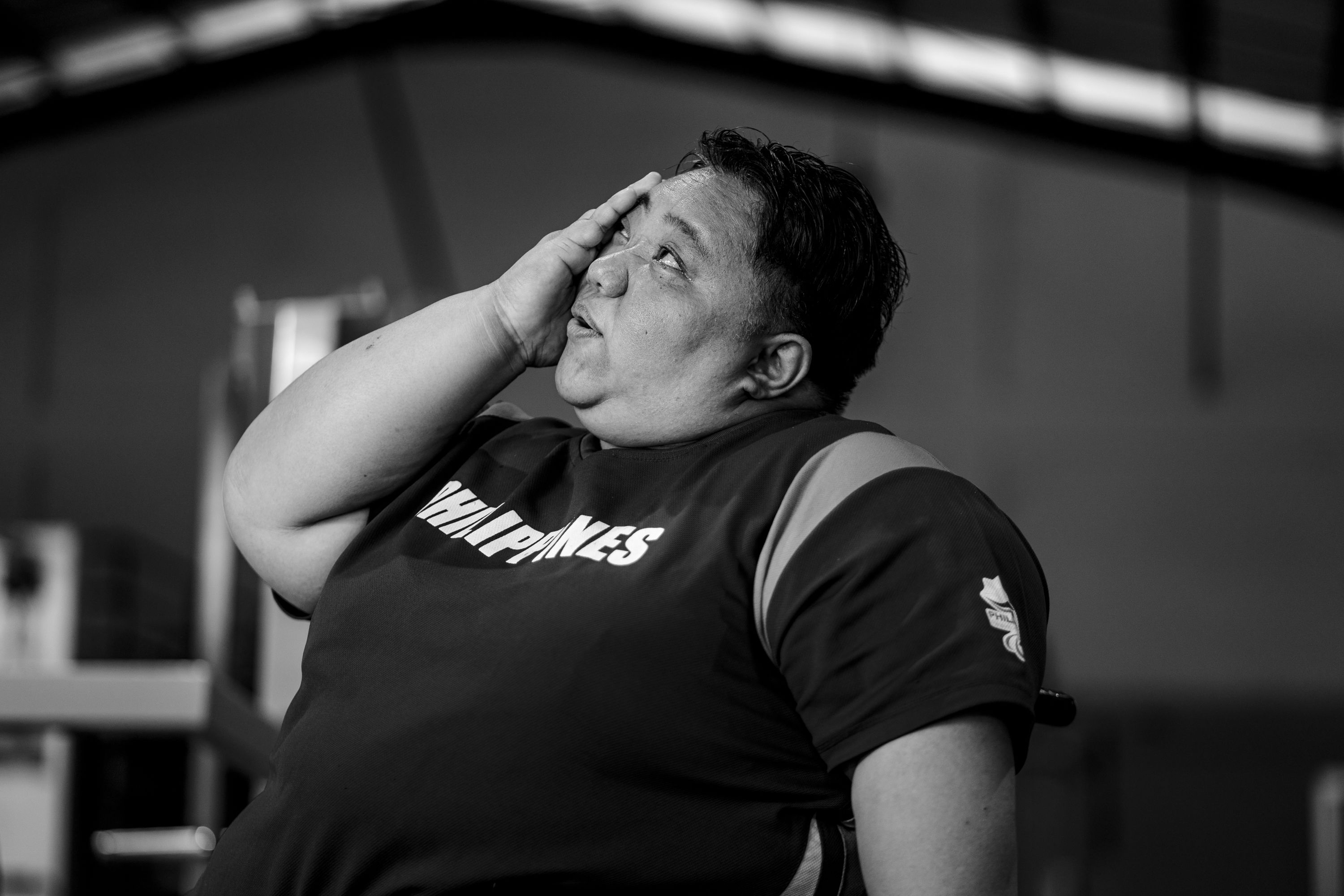
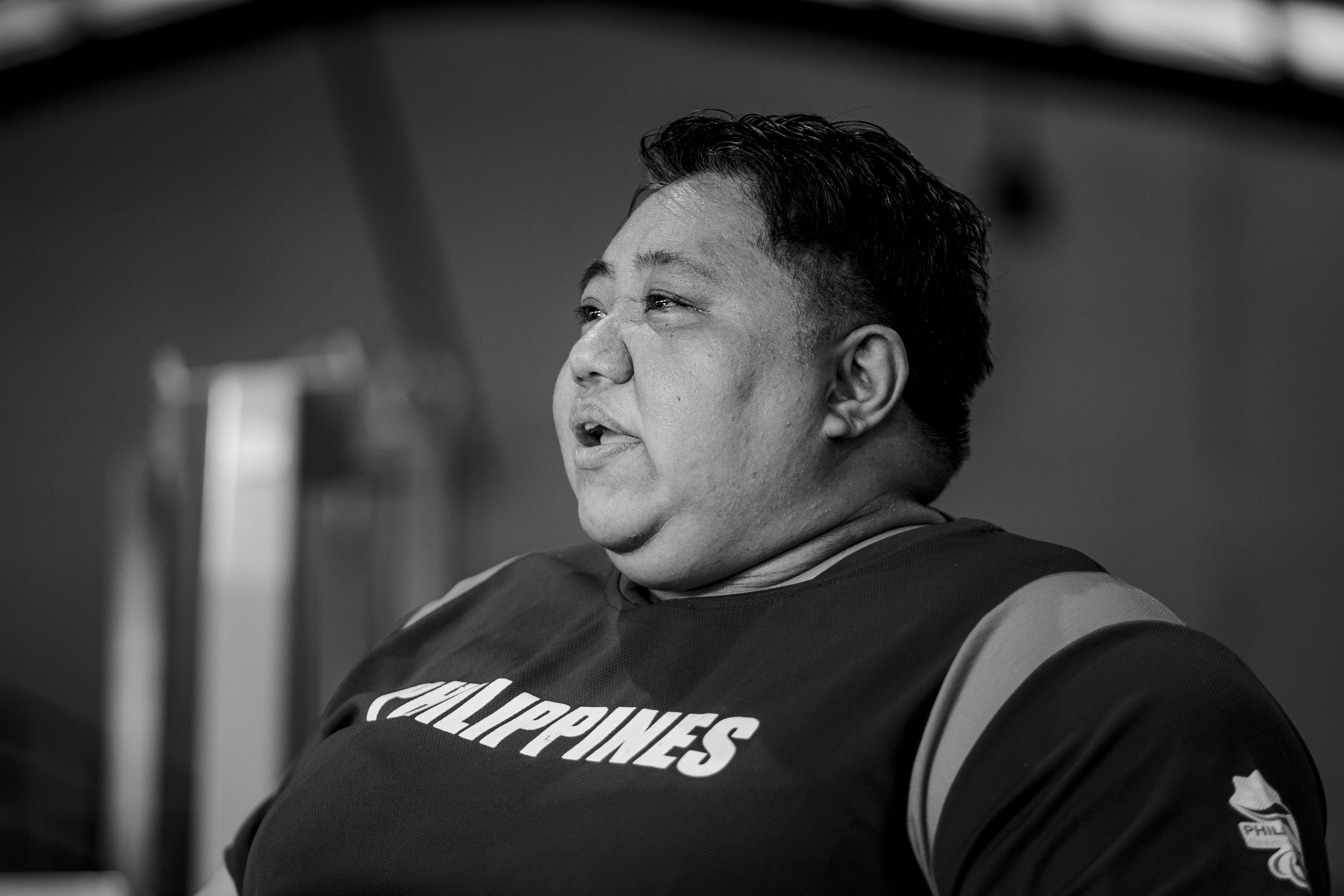
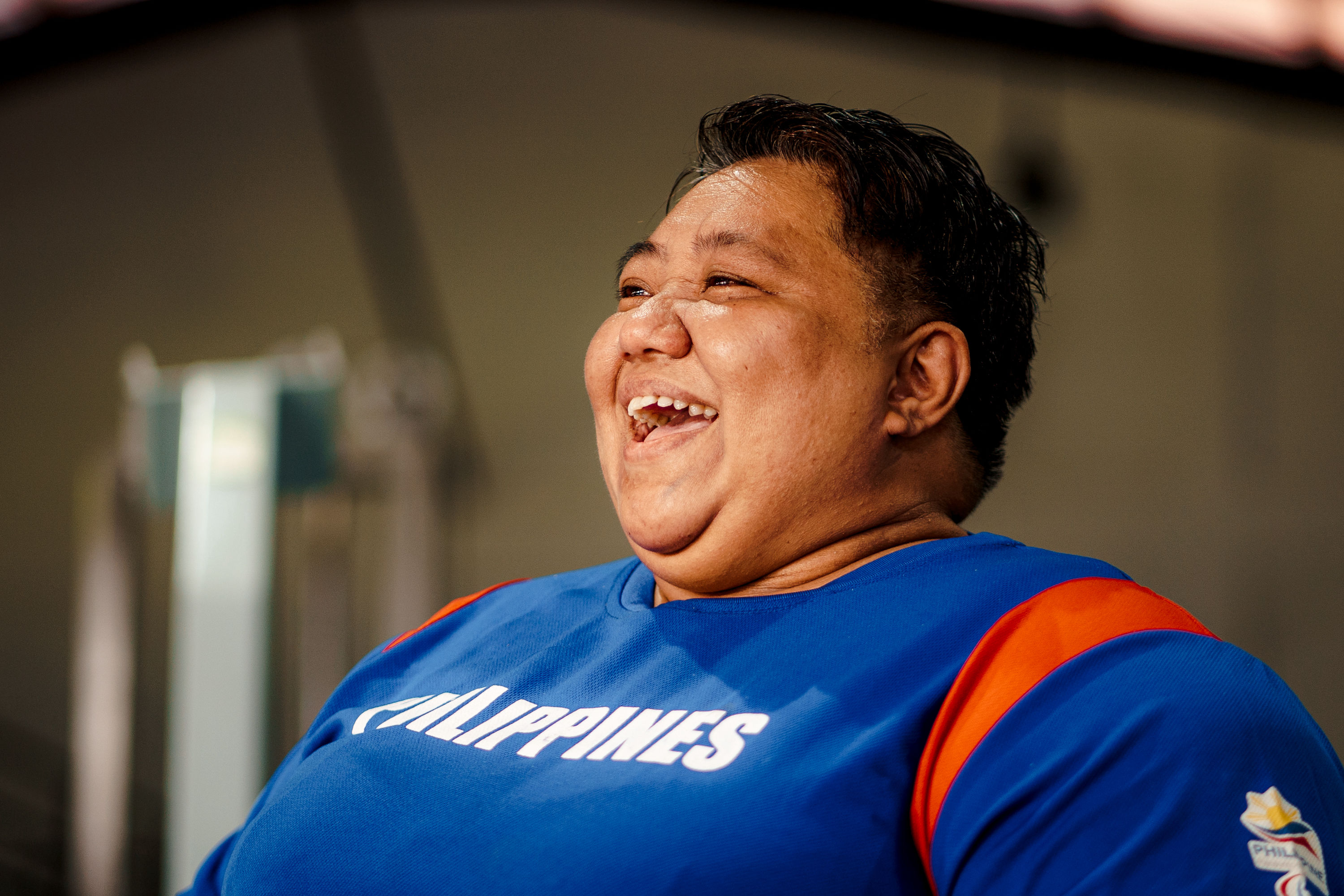
Until she was six, Adeline stayed in Asipulo with her family. Her giddy hopsteps were gone; instead, she would crawl and drag her body across the floor. She could no longer join games of tag and chase her playmates. Her life seemingly came to a sudden halt.
A nun saw her condition and asked her parents about their plans for her future. They did not have an answer. The woman suggested that they enter Adeline into an institution for children with disabilities based in Manila so she could get an education.
Her mother did not want to let her go at first; she was her baby, after all. But her father decided that sending her to the capital was better than staying put in Asipulo, where the mountainous terrain made her situation even more difficult.
Adeline was taken to Bahay Mapagmahal, a dormitory run by nuns in Quezon City. Her mother stayed with her for two weeks, before leaving without saying goodbye.
“Hindi lang ako basta umiiyak,” Adeline remembers of that day. “‘Yong mga tipong labas ang ngala-ngala dahil sa kaiiyak. Ganoon ako umiyak noon eh.”
("I didn't just cry. I cried so hard that you could see the back of my mouth. That was how I cried then”)
Away from home for the first time in her life, she began to attend the School for Crippled Children inside the Philippine Orthopedic Center compound.
From June to March, the entire school year, Adeline would not see her family. Her parents had five other children to support, so they could not afford to visit. The fare was expensive and her mother could not leave her siblings behind.
After her first year in Quezon City, she had forgotten how to speak Tuwali, her native language. When she finally returned to Ifugao for the summer, she found out that her younger siblings had also forgotten who she was. Adeline had become a stranger in her own home.
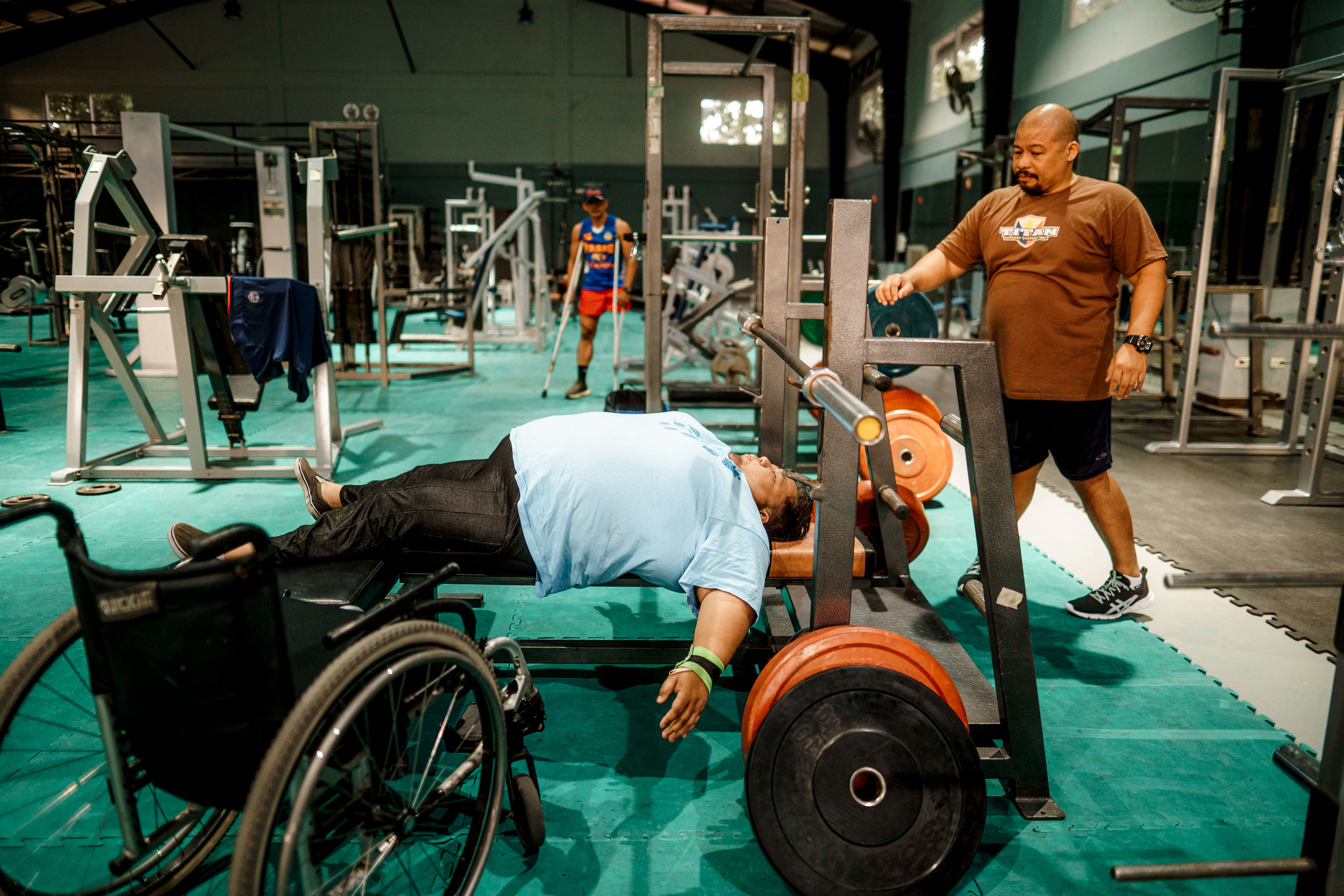
Life in Bahay Mapagmahal was not easy. Every activity was scheduled, and the children had to follow the rules or face the consequences of breaking them. Privileges could be taken away or punishments meted out.
“Tatanggalan ka ng wheelchair or maghuhugas ka ng isang linggo,” Adeline says. “Or ikukulong ka sampayan, isolation para magmuni-muni ka sa kasalanan mo. Ano pa ba? Sinturon. Okay na 'yon kasi isang sakitan lang 'yon.”
(“Your wheelchair could be taken from you or you would have to wash dishes for the whole week. Or you would be locked in the laundry room, in isolation, so you could reflect on your what you have done. What else? Belt. That’s fine because it only hurts once.”)
Sometimes, it all became too much to bear for her young mind. She and the other children in the community weren’t allowed to go outside the compound, but she longed to get away every once in a while.
The only time they could go out is for extra-curricular activities, so Adeline seized all the chances she could get.
“Lahat ng klase ng sports na pwede kong salihan, sinasalihan ko. Bakit? Kasi escape 'yon eh,” she says. “Magaling din akong tumugtog ng string instruments, rondalla, banduria, octavina, gitara. Inaral ko lahat 'yon kasi gusto ko tuwing aalis, kasama ako.”
(“All kinds of sports that I could join, I joined. Why? Because it’s an escape. I am also good at playing string instruments, rondalla, banduria, octavina, gitara. I learned them all because I wanted to be there for every trip outside.”)
Adeline lived in Bahay Mapagmahal for 10 years. She left at 16 to go to college. She could finally go out to the world, she thought. But instead of finding freedom, the transition proved to be more difficult than she imagined.
In grade school and high school, she was in a special education class and all her classmates were persons with disabilities. In college, she was in a regular class where she was the only PWD. It made her feel awkward and self-conscious.
“Hindi ako nakikipag-usap sa mga nakakalakad. Hindi masyado. Kasi parang feeling ko, 'yon nga sobrang insecure ako,” she says. “Walang kumpyansa, ang baba ng tingin ko sa sarili ko. Ganoon.”
(“I didn't talk to those who were able to walk. Not much. Because I felt insecure. I didn't have confidence, I looked down on myself.”)
It took her one year to adjust and settle down, but she eventually finished her degree in computer secretarial education from St. Paul University and began looking for jobs.
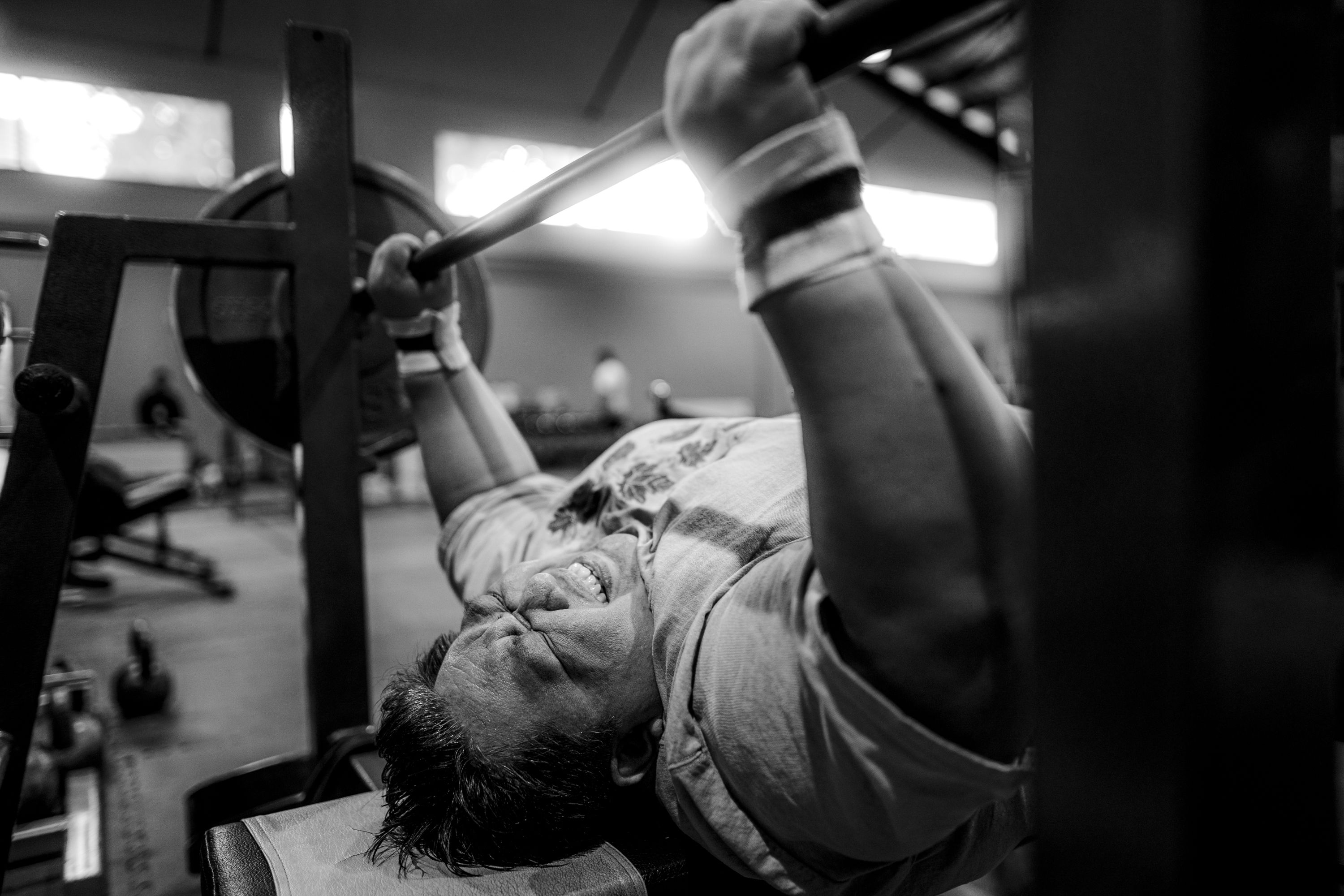
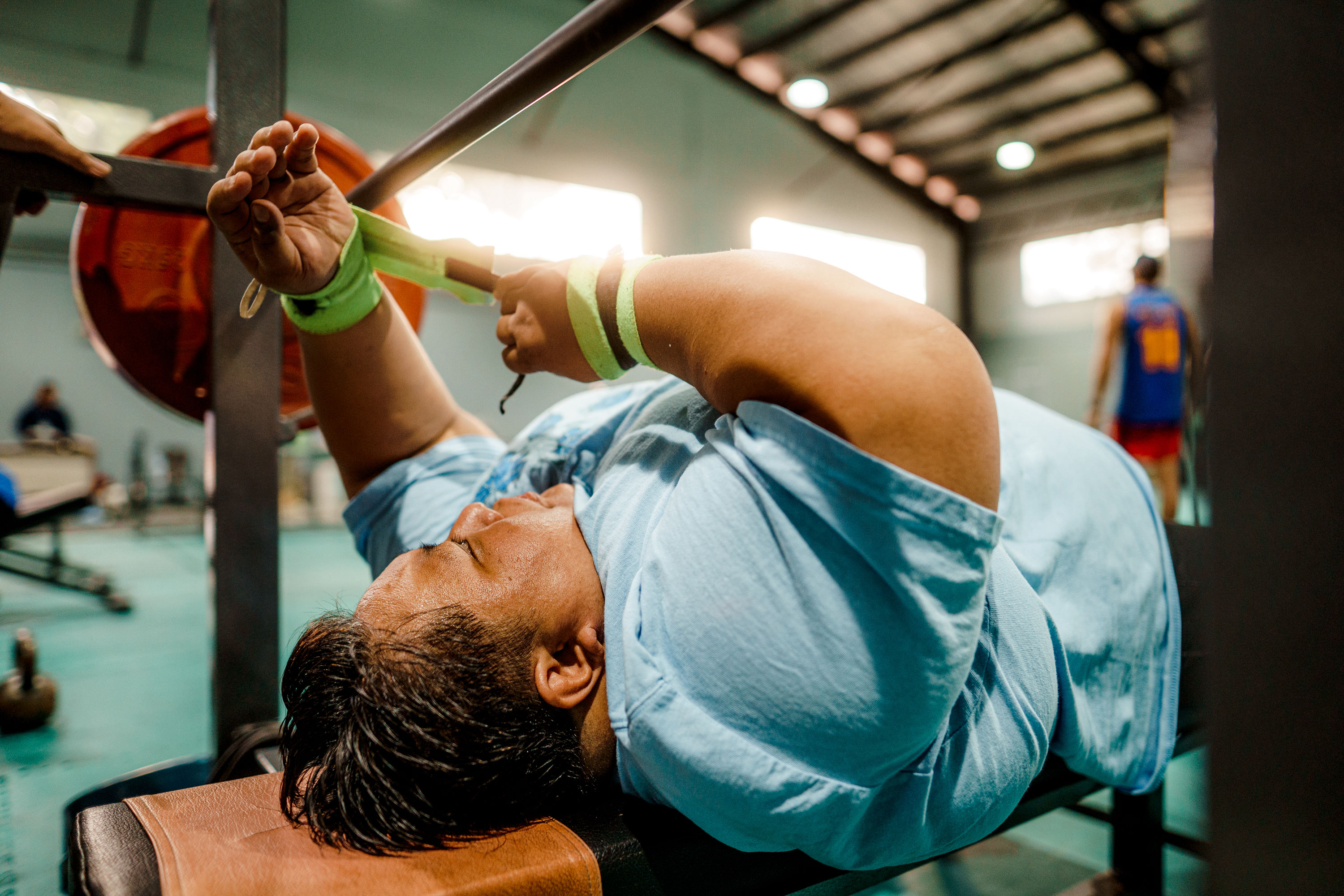
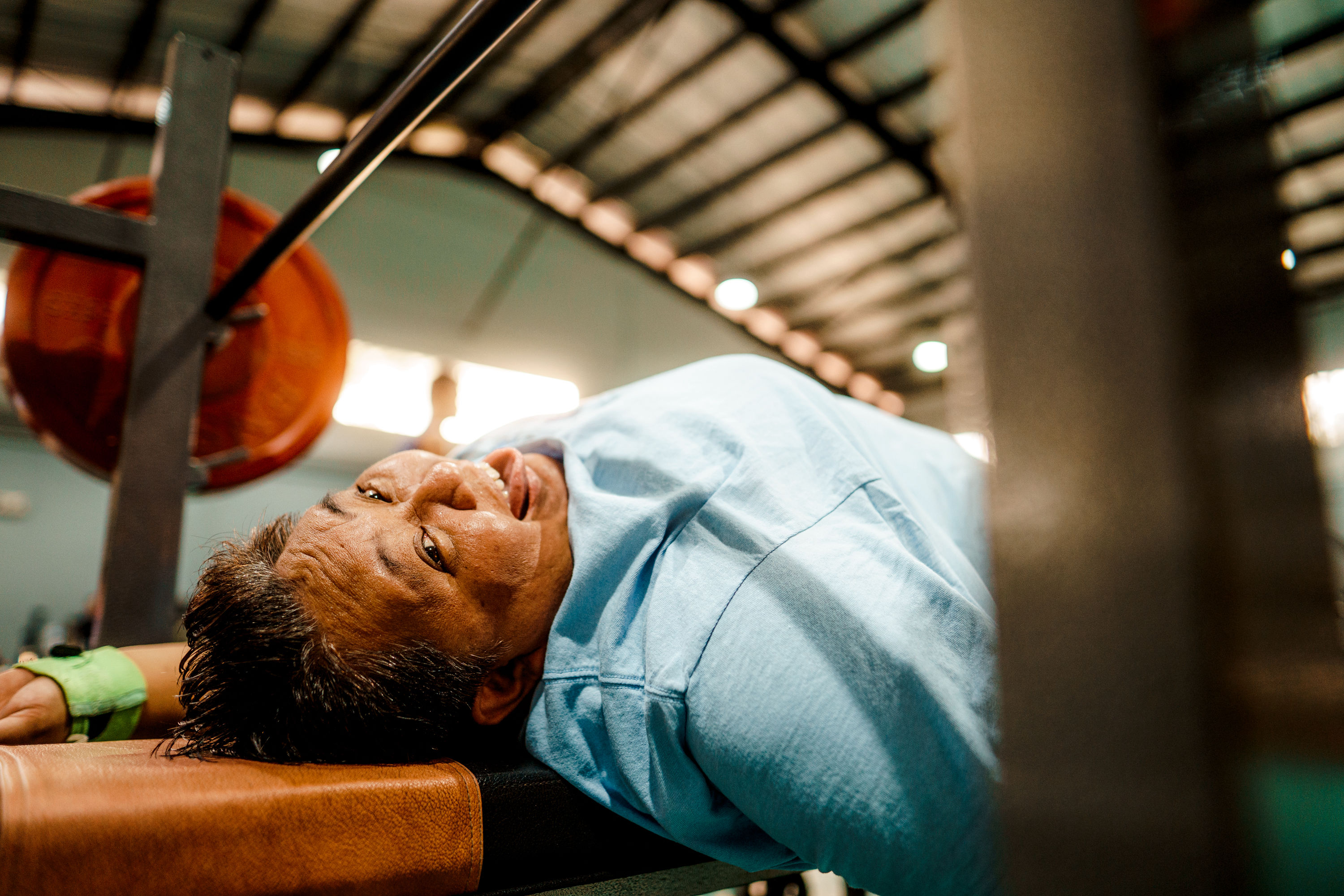
After graduation, Adeline worked as a verifier and coder for Tahanang Walang Hagdanan, a non-government organization providing services to persons with disabilities. But she did not want to stay there for long.
“Sa isip ko, 'Hindi ako magtatagal dito. Ayoko dito. Ayoko dito. Gusto ko mainstream.’ So umalis ako doon tapos nagbakasyon ako,” she says.
(“I thought, 'I would not last long here. I don’t want to be here. I want a mainstream [job].' So I left and went on a vacation.”)
Deep inside, Adeline was not content in staying in her comfort zone. She wanted to take up space outside the safe havens for people like her, to prove that she belonged.
The journey wasn’t easy. Everywhere she went, people did not acknowledge her as a person beyond her obvious disability. Finding work was already challenging in itself, but the transportation infrastructure made it even more difficult.
“Hindi naman pupuwede sa jeep, sa bus or sa tricycle kasi nga 'yong accessibility. So taxi lang 'yong pupuwede,” she says. But sometimes even cabs were not willing to take her as passenger. “Makikita mo talaga 'yong mga taxi driver, nagkaka-stiff neck eh. Ayaw lumingon.”
(“I can't ride on a jeep, bus or a tricycle because of the accessibility. So I could only take the taxi. Like the taxi drivers suddenly had stiff necks. They didn't want to turn their heads.”)
When she made it to the commercial districts to hand out her resume to various companies, she would often be turned away and mistaken for a beggar.
“Diyan sa Ortigas nagdadala kami ng sulat. Dalawa kami eh. Naka-wheelchair. 'Yong mga guwardiya diyan siraulo talaga,” she says. “Sabi niya, 'Ay, bawal po solicitation.' 'Ay, kuya, mag-a-apply kami ng trabaho.' Mag-so-solicit, tama ba 'yon?”
(“We brought our letters in Ortigas. There were two of us on wheelchairs. The guards there were really rude. One of them told us, 'Solicitation is not allowed here.' [We said] 'We're here to apply for jobs.' Soliciting money, is that the right thing to tell us?”)
“Grabe, 'no. Ganoon siguro ang itsura namin talaga. Mukha kaming nanghihingi ng tulong. Nakakatawa talaga 'yon.”
(“That's rich, isn't it? Maybe that’s how we really looked like. We looked like we are asking for help. That was really funny.”)

Despite everything she experienced, Adeline’s condition also allowed her to see that there are still many good people in the world.
“Minsan nasa Katipunan ako, umuulan. Talagang sabi ko, ‘Diyos ko.’ 5 o'clock, labasan ng mga estudyante, sabi ko ‘Paano kaya 'yon?’” she says.
(“One time I was in Katipunan, it was raining. I said, ‘Oh my God.’ It's five o'clock, dismissal time for students. I said, 'How am I going to get a ride?'”)
When a taxi stopped, all the other passengers rushed to get in. Adeline had no chance to compete with them. But the driver, bless his heart, did something which restored her faith in humanity.
“Alam mo ang sabi ng driver? Sabi niya, ‘Hindi. Hindi kayo ang isasakay ko. Siya.’ Kasi nakita niya na naka-wheelchair ako,” she says.
(“Do you know what the driver told them? He said, 'No. I won't give you guys a ride. Her.' Because he saw I was on a wheelchair.”)
Sometimes she would not have enough money to pay for a taxi. But the driver would still allow her in, and told her to pay only the flag down rate.
“Sabi niya, ‘Pagdasal mo ako ah.’ Pinagdadasal ko talaga ‘yong mga ‘yon. ‘Sana manalo siya sa lotto,’” she says.
(“He told me, 'Please pray for me.' I really did pray for him. ‘May he win the lottery.’”)
Adeline eventually found a job at a Chinese marketing firm. She worked there for four years, sending product samples and writing presentations to shopping malls.
For the first time, she found a workplace where her disability was not seen as a hindrance.
“I had to be carried every day up and down sa office. Ilang stairs 'yon? Parang seven tapos may landing, and then another seven pataas. Araw-araw,” she says. “Sa umaga, aantayin ko 'yong mga driver na dumating para iakyat nila ako. Sa gabi, aantayin ko ulit ang mga driver bumalik para ibaba nila ulit ako.”
(“I had to be carried every day up and down at the office. How many stairs were there? I think seven, and then there's a landing, and then another seven going up. Every single day. In the morning, I would wait for the drivers to arrive so they could carry me upstairs. In the evening, I would wait for them again to come back so they could carry me down.”)
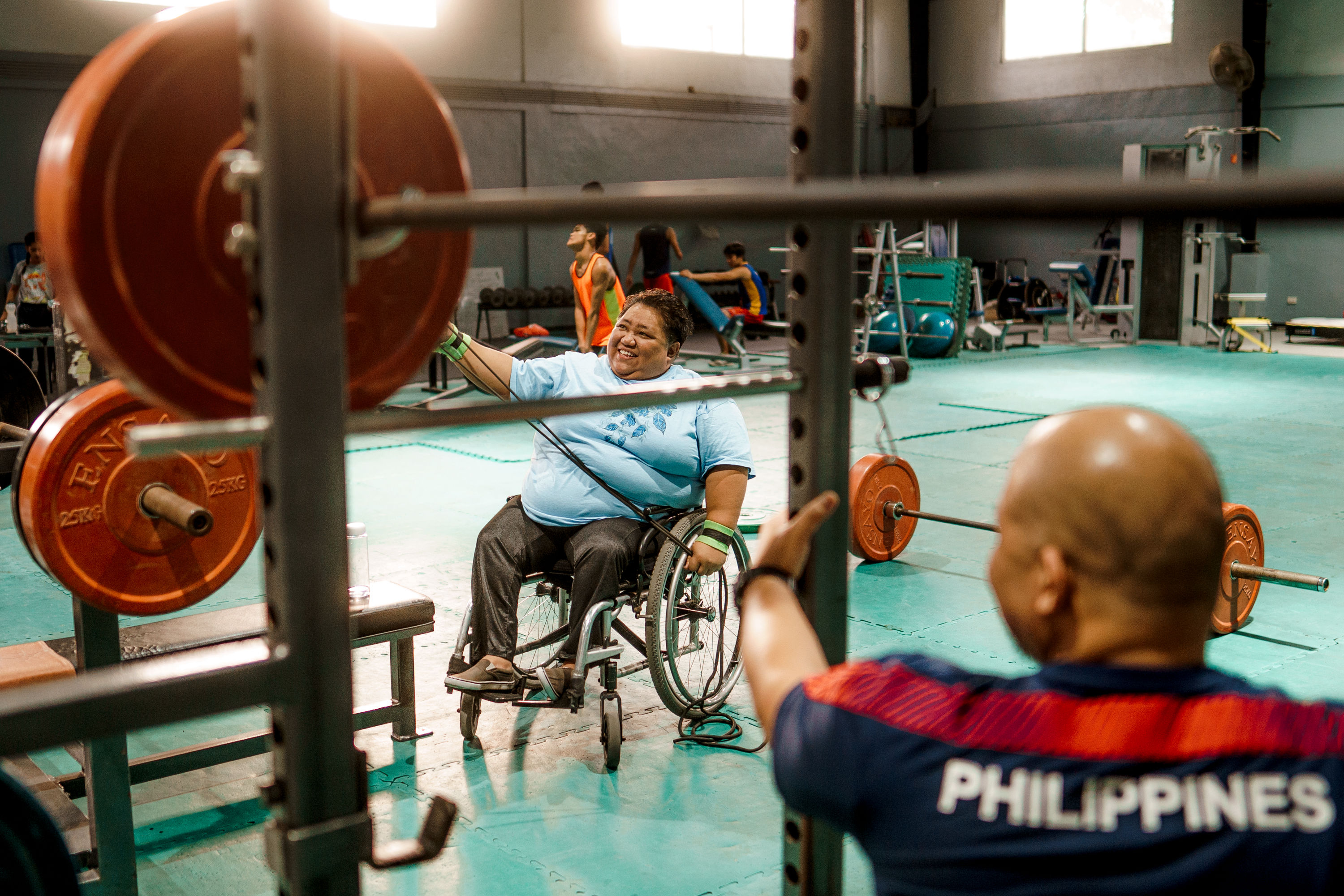
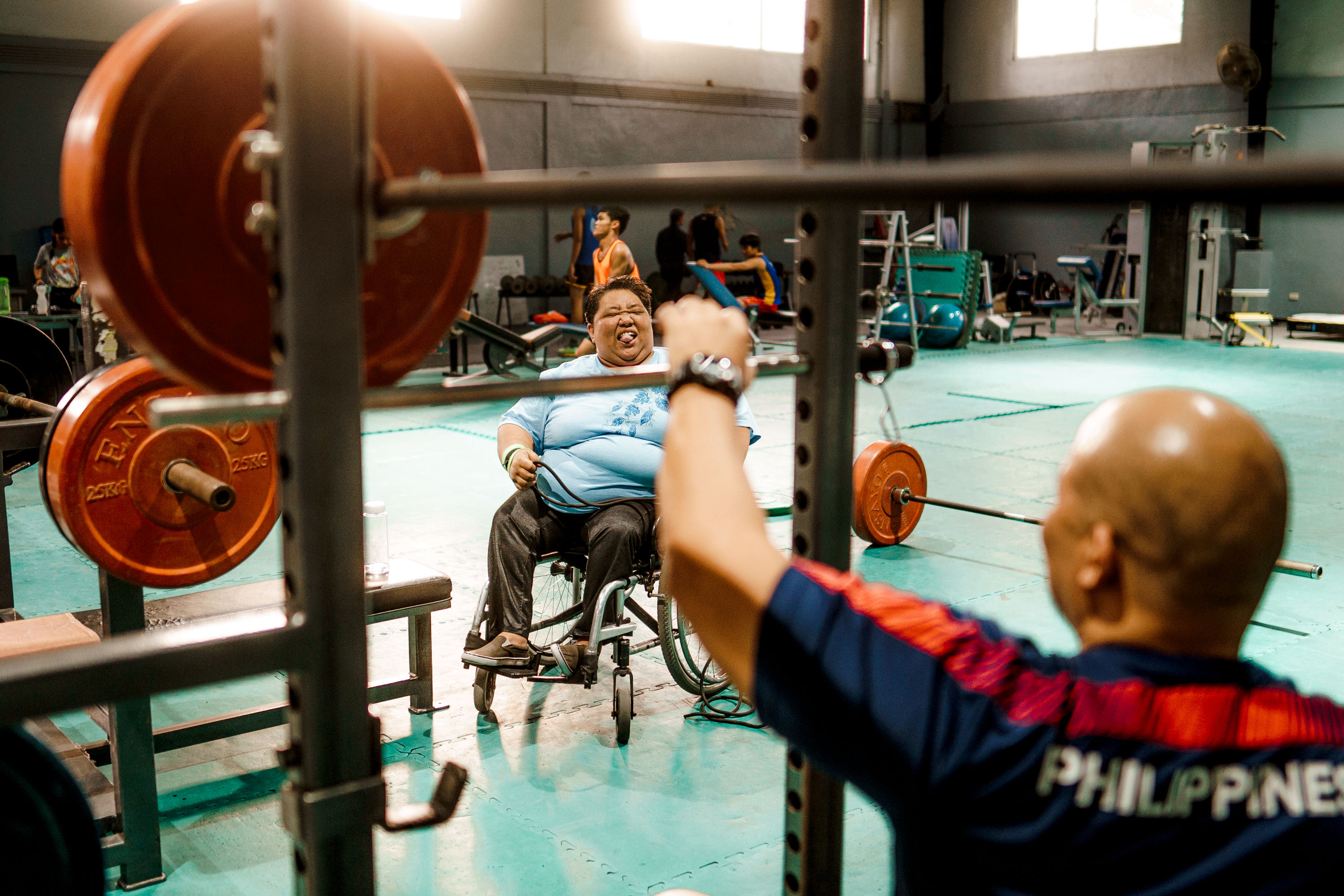
While Adeline was active in sports when she was in Bahay Mapagmahal, she stopped when she was in college to concentrate on finishing her degree. After she found work, her friends invited her to join them lift weights at the gym.
“Nagsimula ako dahil lang sa kantyawan ng mga lalaki kong kaibigan,” she says. “Try ko lang daw kasi ang laki naman daw ng katawan ko. So tinry ko para lang patunayan sa kanila na, ‘Hmm... mas malakas ako sa inyo.’
(“I started because my male friends dared me to try. They said my body looked built for it. So I tried just to prove to them that, ‘Hmm... I'm stronger than all of you.’”)
“Pinabuhat muna sa akin 15 kilos pa eh. ‘Yong maliit na bar. Sus, ganyan-ganyan lang. Dali naman no'n. Tapos pinabuhat sa akin ‘yong bar na 'yan, madali pa rin. So ayun, and then sabi nila, ‘Hala!’ Talagang barako daw ako.”
(“They had me lift 15 kilos. The small bar. It was light and easy for me. And then they had me lift a heavier bar, and it was still easy. They were surprised and said I was really strong.”)
Adeline thinks she became good at powerlifting precisely because she could not walk. She used braces and crutches until she was 16 years old, so her upper body grew stronger. When she could not find a taxi to ride, she would push her wheelchair forward by herself, often traveling kilometers in them.
She began joining local competitions. With each lift on the bench press, she racked up wins. And then she started representing the country in international tournaments.
When she won a silver medal in the Far East and South Pacific Games for the Disabled, the precursor for the Asian Para Games, she was noticed by someone from the International Paralympic Committee.
“Kinrongratulate niya ako tapos sabi niya nilagay ko na nga daw ang Pilipinas sa map. So sabi niya, ‘I hope to see you in Sydney.’ That was 1999,” she says.
(“He congratulated me and then he said I put the Philippines on the map [of powerlifting]. He said, ‘I hope to see you in Sydney.’ That was 1999.”)
The Paralympic Games would be held in the Australian city in 2000. Adeline kept competing, and with a gold medal finish at a tournament in Miami, she sealed her qualification to the Games.
Even so, her participation remained uncertain. She did not know if she would be able to raise enough money to pay for her entry fees, transportation costs, and training. Mike Barredo, the president of the Philippine Sports Association for the Differently Abled, lobbied for funding on her behalf.
The Philippine Charity and Sweepstakes Office had previously given financial assistance to para-athletes in competition.
“‘Yong una sabi nila PCSO daw. Sabi ni Mr. Barredo, ‘Ayoko sa PCSO. Bakit PCSO ang magbibigay? Charity talaga ang tingin n'yo sa [para-athletes],’ she says.
(“Initially they said the PCSO will help. Mr. Barredo said, ‘I don't want the PCSO. Why should it fall to the PCSO to give [money]? They really look at [para-athletes] as if we need charity.’”)
Barredo had a different vision. He wanted para-sports to be supported by the Philippine Sports Commission, like all the other sports.
He was able to convince then-PSC Chairman Carlos Tuason to send Adeline to Sydney, so she began preparing for the Paralympics. She was given only three months of training.
“Ganoon lang talaga kakonti ang suporta. Wala namang ganitong interview. Umalis kami na wala, wala lang. No expectation talaga, participation lang,” she says.
(“That's how little the support was. No interviews like this. We left like it was nothing. There was no expectation, only participation.”)
In Australia, Adeline started to feel nervous and intimidated upon seeing her opponents. Her coach Nestor Fajota III encouraged her and told her to pray.
“Sabi niya, ‘Basta, Adeline, maniwala ka na nag-training tayo. Nag-training tayo at naniwala tayo na, alam mo 'yon, just give it your best. Bayaan mo na kung wala, kung meron basta. Walang medal, may medal, hindi natin iisipin 'yon. The goal is for you to perform well. Pakita natin na maayos ang performance mo kahit na ganoon lang kaigsi ang training.’”
(“He said, ‘Adeline, just remember that we trained. We trained and we believed that you can give it your best. Don't mind if you don't win anything. Medal or not, we won't think of that. The goal is for you to perform well. We will show them that you can give a good performance despite the short training.’”)
Adeline lifted 97.5 kg on her first attempt. She failed her second at 107.5 kg, but bounced back on her third lift at 110 kg.
Barredo and his wife watched Adeline compete. Barredo is blind, so his wife operated the video camera they brought with them to document her performance.
“Noong nakita nila na tumaas ang rank ko sa third, hala nagtatalon na silang dalawa. Nahulog 'yong video cam so wala akong pictures noong competition na 'yon. Meron man pero ang layo-layo ko. 'Yong ganoon. Anyways, nandito naman lahat 'yon,” she says, pointing to her heart.
(“When they saw that my rank climbed up to third, the two of them jumped in joy. The video camera fell on the floor so I didn't have pictures during that competition. I had a few, but I was really far away. Anyway, it's all in here.”)
Adeline became the first Filipino ever to win a medal at the Paralympic Games. She did it the first year women were allowed to compete in Paralympic powerlifting.

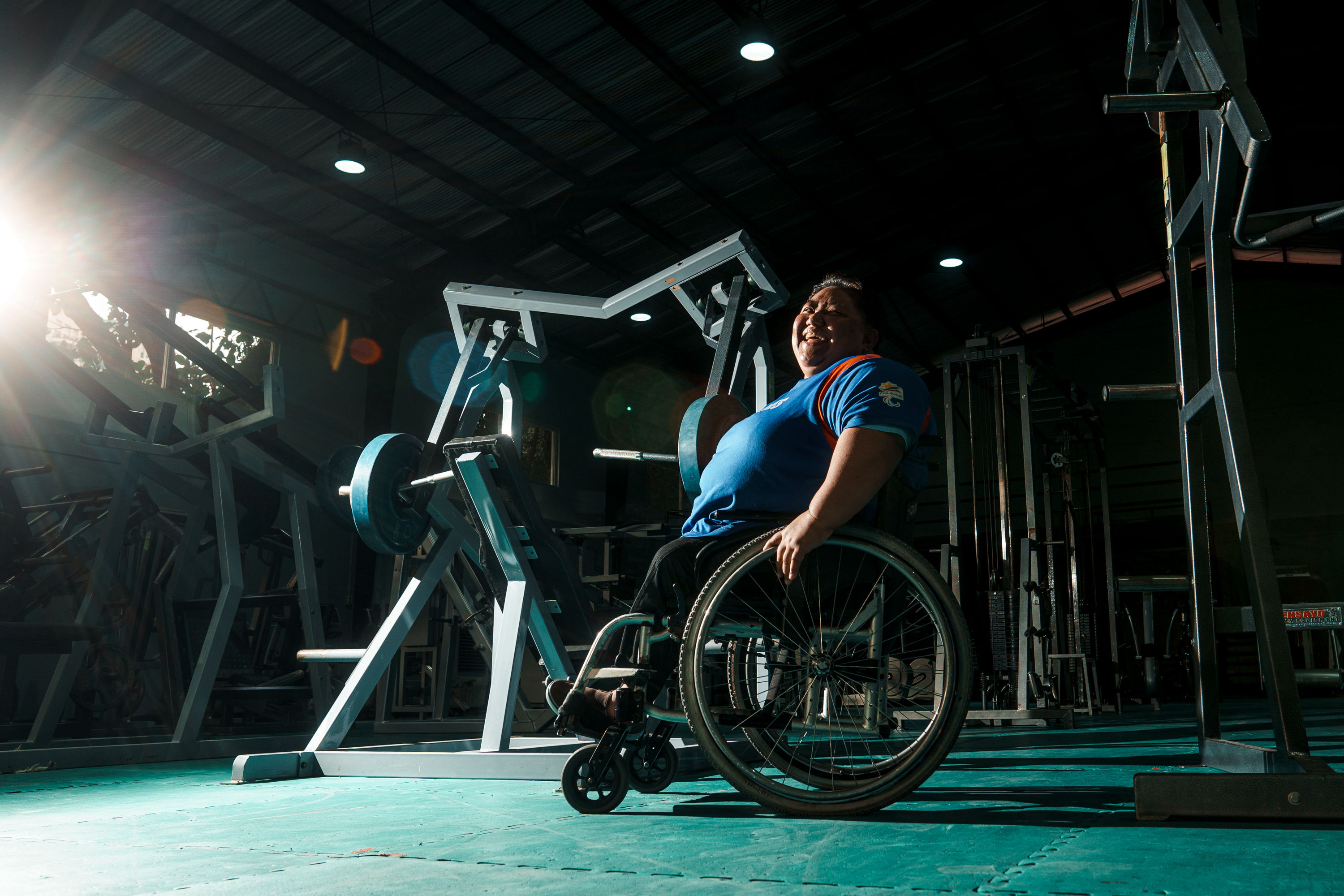
Adeline didn’t think much about her Paralympic appearance at the beginning.
“Ang sa akin lang kasi noon parang, ‘Ay sus. Ang sarap naman nito. Libreng biyahe. Buhat-buhat ka lang,’” she says. “I went there na pang-sarili ko lang.”
(“For me back then, I just thought, ‘This is really sweet. I get to travel for free just for lifting weights.’ I went there only for myself.”)
But it finally hit her when she saw the Philippine flag being raised.
“Doon ko naisip na grabe ‘no. Nakakaiyak pala talaga. Iyak ako eh. 'Yong ganoon. Doon ko naano na hindi lang pala para sa akin 'yon kundi para sa mga kasama ko,” she adds.
(“That's when I thought that this is really big. It's really tear-jerking. I cried. That's when I realized that this is not only for me but for others like me.”)
Adeline also felt appreciated, like she has never been appreciated before, by fans who watched the Games in Australia.
“Noong nanalo ako parang sinabi nila sa amin na always bring your medal wherever you go kasi alam mo 'yon talagang magpapa-picture silang lahat,” she says. “Siguro ilang bata 'yong kailangan kong mag-sign tapos usog ka naman doon, ganoon na naman.”
(“When I won they told us we should bring our medal wherever we go because everyone was asking for pictures. I had to sign autographs for many kids in line.”)
Since she competed at the Paralympics, many other Filipino para-athletes made it to quadrennial meet. In 2016, table tennis player Josephine Medina added another bronze medal for the Philippines. Para-sports has come a long way, and Adeline is glad to see the situation change for the better especially for the PWD community.
“Usually ang pag-po-portray sa mga may kapansanan parang namamalimos, nakakatawa or nakakaawa,” she says. “O kaya dati ang pinag-uusapan lang ay 'yong mga kakulangan. Ngayon pwede na nating pag-usapan ano 'yong mga meron kami, 'yong kalakasan ng mga may kapansanan.”
(“Usually persons with disabilities are portrayed as people who beg for money, someone laughed at or pitied. They would always talk about what's lacking. Now, we can talk about what we have, our strengths as persons with disabilities.”)
Adeline hopes that society will continue to empower persons with disabilities. Little things, such as respecting the ramp for wheelchairs, giving way in elevators, and even simply listening to what they need, are important.
As for her fellow PWDs, she encouraged them to accept that they got the short end of the stick in life and face the challenges in front of them.
“What we should do is we rise above those difficulties,” she says. “And let's live the best life that we can.”
SHARE THIS STORY